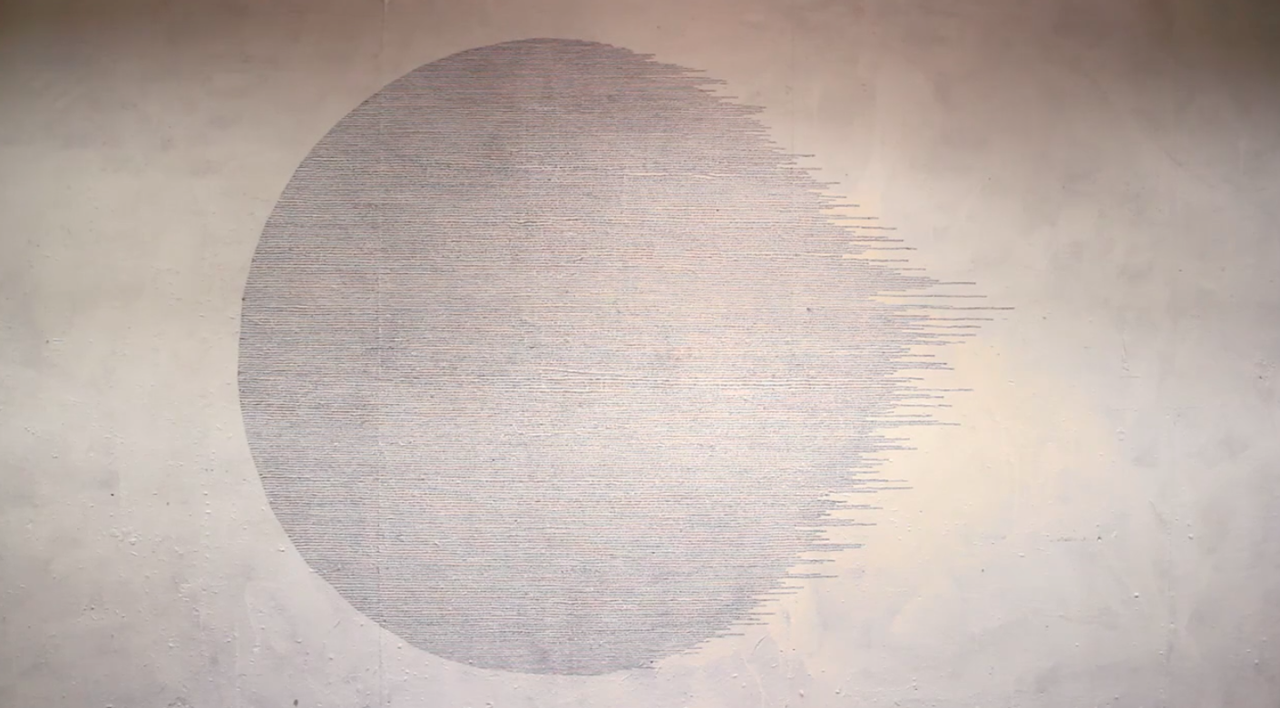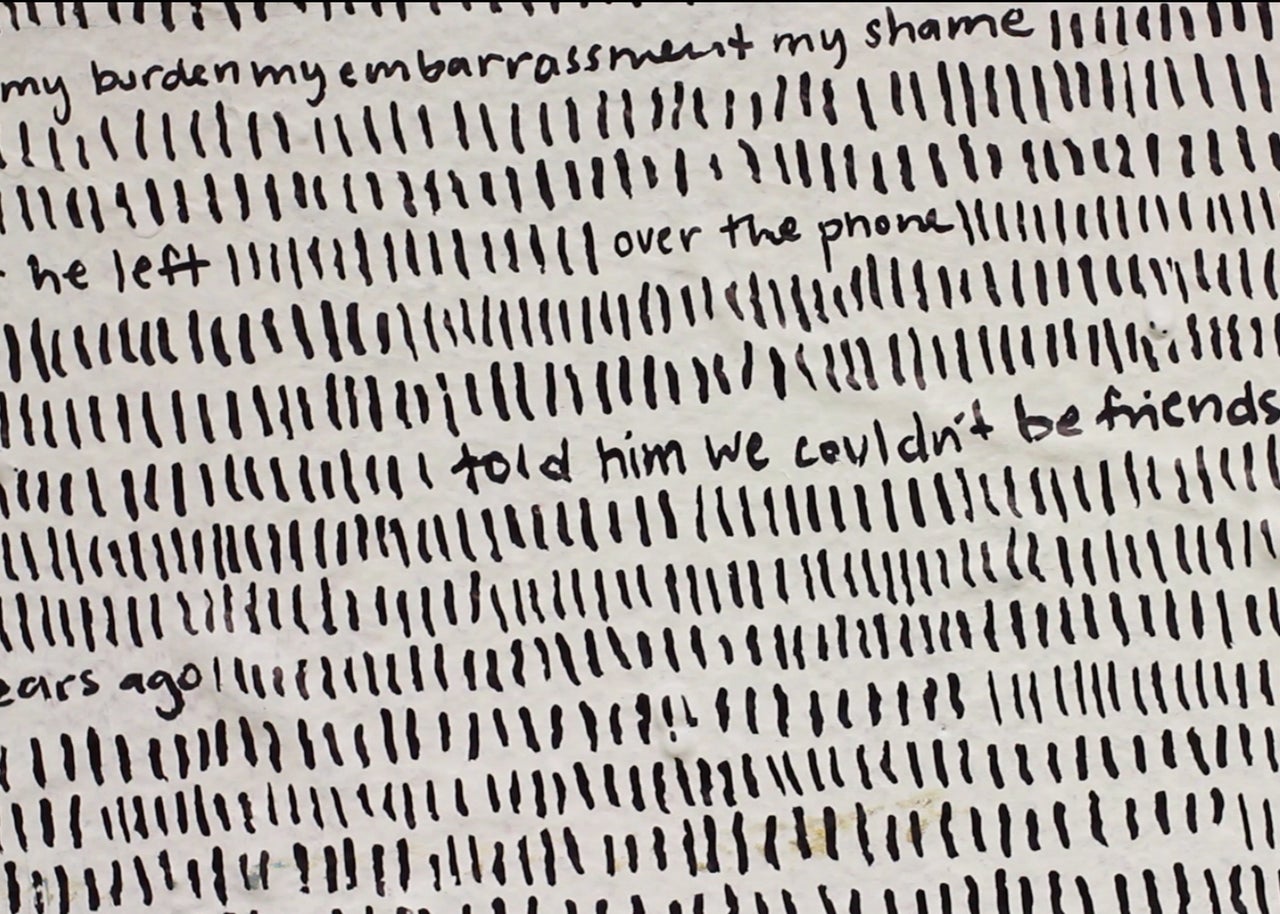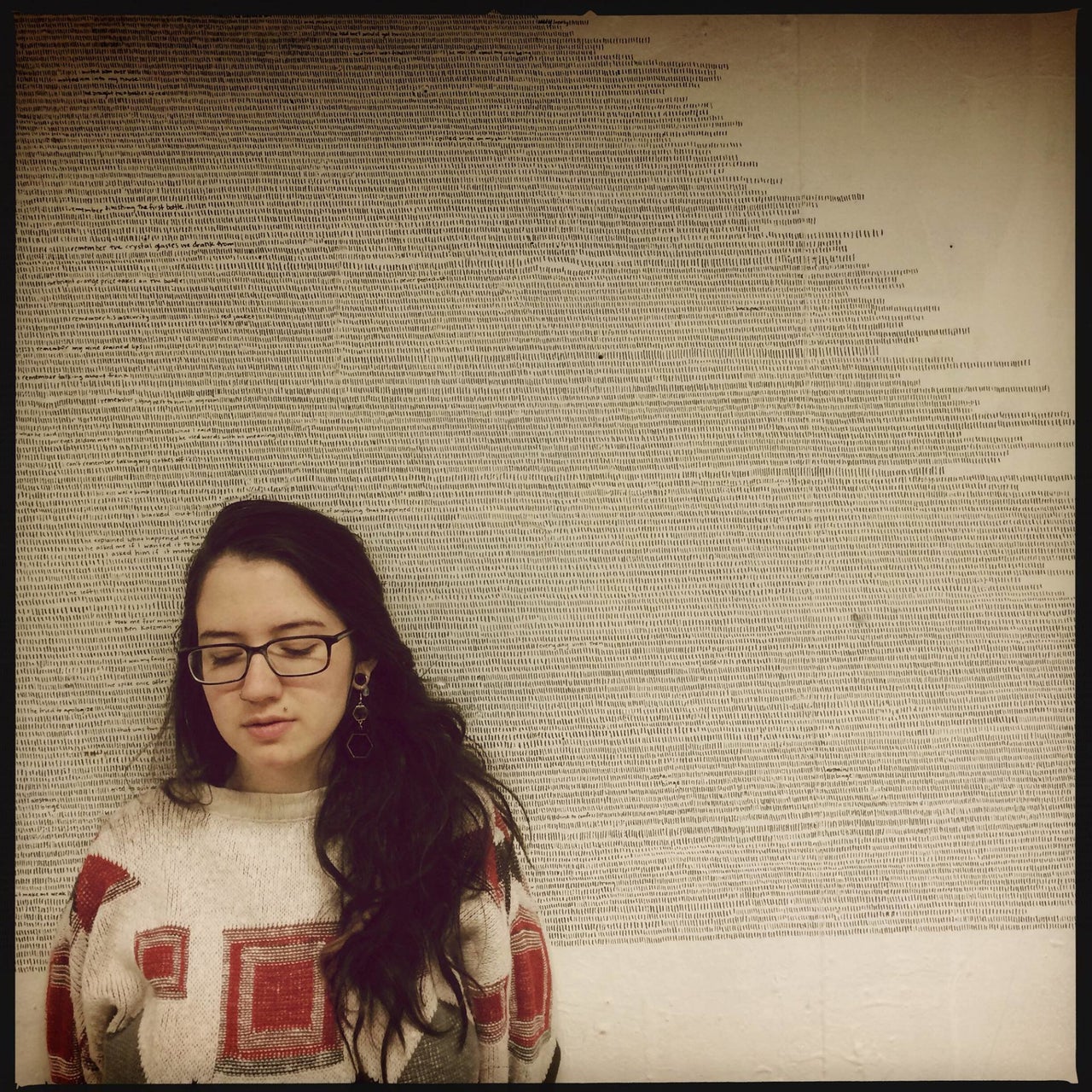At first, Shannon Mackenzie’s “Rotatio” appears like a vast mandala of tally marks, arranged on a white wall in a six-foot wide circle. Look closer, however, and you will notice words embedded within the tallies, softly vying for your attention.
“His kiss was a bomb,” reads one. “I blacked out,” another. Together, these gasps of written texts tell a story ― the story of when Mackenzie was raped.
“When I first imagined the piece, actually making it felt like one of the scariest things I could do,” Mackenzie wrote in an email to HuffPost. “I was afraid to tell people what happened. I was afraid to share it with people I loved. I was afraid to use his name. I wasn’t even sure if I would be able to finish it. At the same time, I knew that not making it would hurt me even more.”
Mackenzie began sketching and participating in drawing exercises following her assault as a way to alleviate stress and anxiety. The simple action of applying thousands of tick marks, one after another, became, for the artist, a means of survival, a reason to keep going and keep marking. One night, the artwork she’d subconsciously embarked upon revealed its final shape: a conglomeration of simple tally marks stretched into a dark orb of uniform markings. A shadowy circle, whose edges were already bleeding beyond their allotted edges.

“The circle has always been a powerful symbol,” Mackenzie said, “representing a whole, feminine energy, cycles, the universe.” She was particularly influenced by a Thomas Moore quote, which she shared: “All the work on the soul takes the form of a circle, a rotatio.”
For 33 hours over the course of two weeks, Mackenzie participated in the meditative ritual of applying mark after mark, sprinkling in the painful details of the night she was attacked. She includes the name of her rapist in the piece, a decision not rooted in revenge, as the artist explained, but in her desire to tell her story without shame or censorship, relieving herself of some of the weight of the abuse she’s continued to carry.
“Its creation was about storytelling, but only to those who wanted to hear the story, to read it,” the artist said. “It was a way for me to finally share what happened to me so that I could stand on it and justify its reality in my life.”

Many of the people who saw the piece in person, Mackenzie recalled, didn’t even realize that language was buried amid the lines. They took in the image as a whole but did not absorb the entirety of the narrative and the strength it required.
At the end of the performance, Mackenzie painted over the outcome of her work with white paint, marking the piece’s conclusion with a blank canvas, a new beginning. The only record of the piece lives in a short documentary Ian McClerin made of the piece in 2015, also titled “Rotatio.”
Initially Mackenzie never intended the piece to be viewed by a large public audience; it was her project, her story, her healing process. But McClerin, who documented the piece from start to finish on film, encouraged Mackenzie to share her story, “take the leap,” submit to film festivals and reach out to a wider viewership.
“To be completely honest, I made this piece with no expectations of feedback beyond the small group of people that saw it in person,” Mackenzie said. “I was terrified of what the feedback might be. And now, I am blown away by the responses ― so much positivity, from individuals who I’ve never met to people in my own community, that have been able to reach out to me in collective support. The feedback and the entire process has truly changed me life in a way that I never could have imagined.”
Under four minutes long, McClerin’s short film has now been viewed over 80k times on Vimeo. The simple image of a floating circle infested with tally marks speaks to the universality of the pain of being a survivor of rape. The language interspersed throughout reveals the individuality of every unique instance.
Mackenzie’s ritual was a monumental purge ― a rejection and ejection of fear, of shame, of painful memories, of fragments of old self, of silence. “There is a saying that you get out as much as you put in,” the artist says in the video, while painting over her labor-intensive creation, ruminating on its lasting impact. “This is post-traumatic growth. This is something you carry forever, regardless of how it affects you.”


